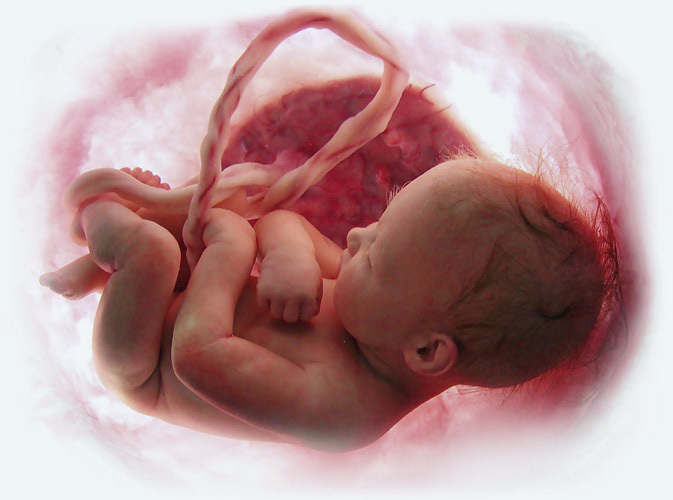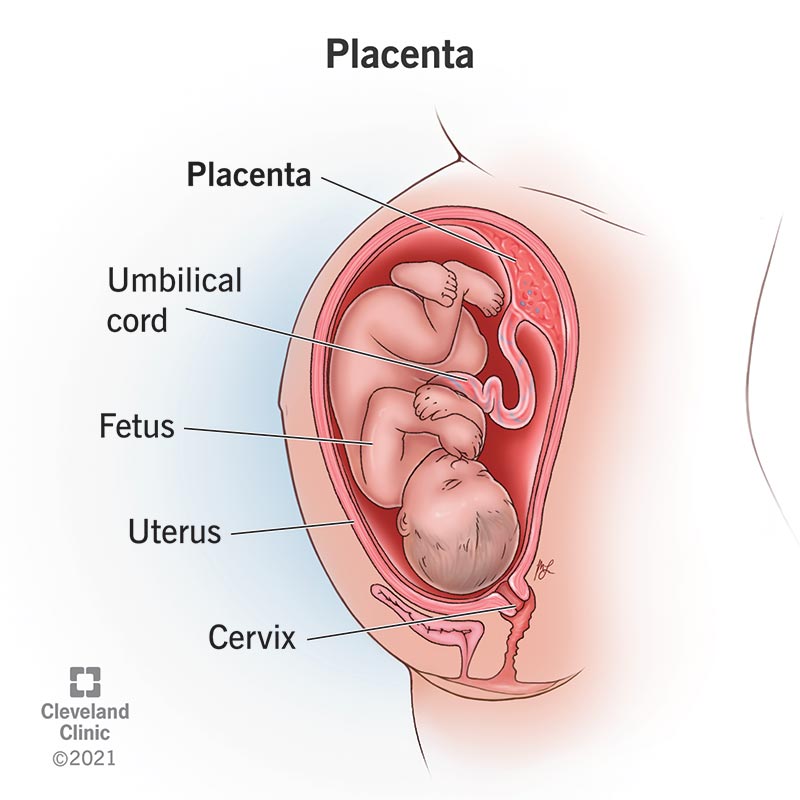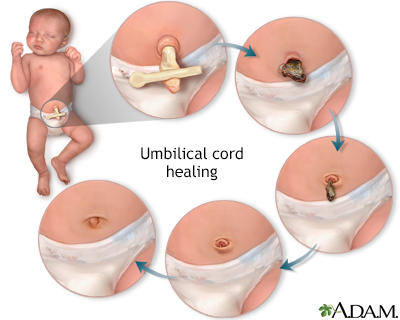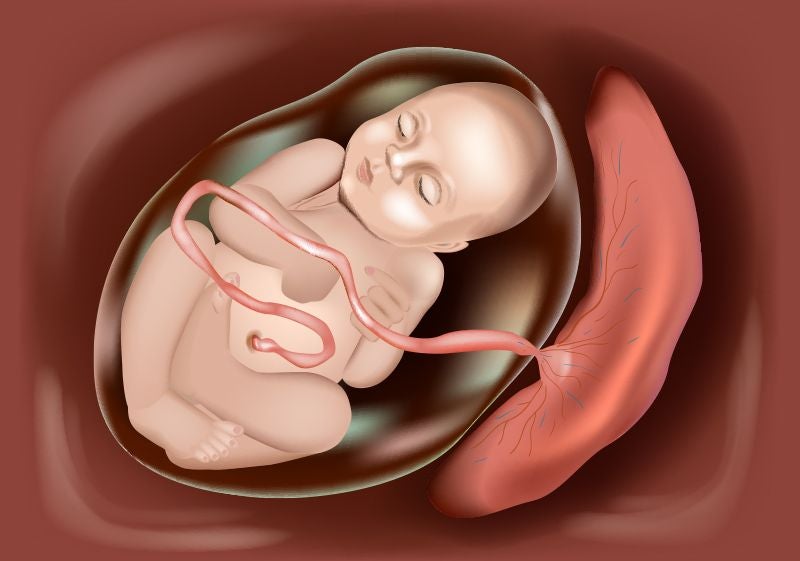how do umbilical cord work
Throughout your pregnancy the umbilical cord has functioned as the connection between your baby and the placenta. One vein delivers nutrients and oxygen-rich blood to your baby and two arteries carry waste from your baby back to you.

True Knot In Umbilical Cord Risk Factors Signs Diagnosis And Treatment
During the late stages of your pregnancy the cord has been passing on antibodies as well benefiting your babys immune system.

. The umbilical cord is so significant that many parents choose to save the blood from their babys cord. What Is an Umbilical Cord. At birth the umbilical cord is cut and the leftover bit.
At full term an umbilical cord is about half a meter long a length that allows the baby to move around safely. It allows the transfer of oxygen food and nutrients. Tunica externa this outermost layer is made of a dense elastic-like fiber to protect the cord.
The umbilical cord and the fetal portion of the placenta is an organ that grows from the fetus. The umbilical cord plays a key role in the gestation of the developing fetus. When the baby is born the doctor cuts the umbilical cord and a small piece is left attached to the baby.
How Do Umbilical Cord Stem Cells Actually Work. The umbilical cord which connects your baby to the placenta contains three vessels. Being a constant supervision technique it does require concentration and effort on your part.
In fact the role of umbilical cord is also to help with the formation of the placenta which is connected to the uterine wall. Umbilical cord training is a constant supervision-based method where you have your puppy permanently attached to you by a leash. The umbilical cord is a lifeline that connects you to your baby during pregnancy.
Umbilical cord at birth. When this piece falls off you can see the babys belly button. One joins with the hepatic portal vein in the liver and the other connects to the heart through the inferior.
Technically once your baby is birthed the umbilical cord will no longer be. September 15 2021. After birth the umbilical cord is no longer needed so its.
When umbilical cord cells are placed into an environment of injured or diseased tissue the stem cells go to work inhibiting the damaging inflammatory components and modulating the immune system. The umbilical cord is cut soon after birth and your babys remaining umbilical cord stump will dry and fall off one to. It helps to regulate your babys blood flow and.
Your babys umbilical cord has three layers. The blood in the arteries contains waste products such as carbon dioxide from the babys metabolism. And it provides for the removal of waste and deoxygenated blood.
In placental mammals the umbilical cord also called the navel string birth cord or funiculus umbilicalis is a conduit between the developing embryo or fetus and the placenta. The umbilical cord also ensures that blood does not mix and keeps the baby alive and growing. It has brought important nutrients and blood to your baby.
The veins job is to transport oxygen and nutrients from your placenta to your baby. Tunica media the middle layer contains a majority of the umbilical cords blood vessels. During pregnancy the umbilical cord supplies nutrients and oxygen to your developing baby.
When an egg is fertilized it divides into two components one becomes the embryo which develops into the fetus and the other becomes the placenta which grows along the lining of the uterus. But due to the physical attachment between you and your dog by a leash its not as demanding as pure constant. One big cord connected to mom that splits into separate ones for each fetus.
Umbilical Cord Physiology. Each will have their own that then connects to the maternal placenta. The umbilical cord is still tied to your kid within your womb when his or her head emerges from your vagina.
In the human fetus the umbilical cord arises at the belly and by the time of birth is about 2 feet 60 cm long and 05 inch 13 cm in diameter. It carries oxygen and nutrients to the baby and waste away from the baby. Furthermore these cells secrete growth factors and other products that nourish damaged cells back to.
The arteries are responsible for transporting your babys waste material which are eventually disposed of through your. Carbon dioxide is transferred across the. It has three blood vessels.
One branch returns to your stomach while the other leads directly to your baby. It provides nutrients and oxygenates your babys blood. The umbilical vein supplies the fetus with oxygenated nutrient-rich bl.
During prenatal development the umbilical cord is physiologically and genetically part of the fetus and in humans normally contains two arteries the umbilical arteries and one vein the umbilical vein buried within Whartons jelly. The arteries carry blood from the fetus to the placenta while the vein delivers blood from the placenta to the fetus. After birth the umbilical cord is clamped and snipped.
Each fetus has their own separate cord connecting to mom. Two arteries which carry blood from the baby to the placenta and one vein which carries blood back to the baby. It is made up of two small arteries and one larger vein.
The umbilical chord splits into two branches after it passes through your pelvic canal. This is the name for the long tube that runs between a mother and her unborn baby. How It Works.
Umbilical cord Latin Funiculus Umbilicalis narrow cord of tissue that connects a developing embryo or fetus with the placenta the extra-embryonic tissues responsible for providing nourishment and other life-sustaining functions. The umbilical cord develops from embryonic tissue and will grow about 60 centimetres long. Both bring blood to your child.
The umbilical cords arteries and veins are surrounded by a. The umbilical cord enters the fetus through the abdomen and turns into two branches.

10 Reasons For Umbilical Cord Blood And Tissues Collection Cord Blood Center Group

Recognizing When A Child Injury Is Caused Brain Injury Symptoms

Function Of Umbilical Cord A Detailed Guide For Parents

When Does The Placenta Form And What Does It Do Learn All About The Placenta Babycenter

Umbilical Cord Blood Gases And Birth Asphyxia

Lotus Birth What Experts Say About Cutting The Cord Live Science

Placenta Overview Anatomy Function Complications

What Is The Umbilical Cord Babycenter

Umbilical Cord Care In Newborns Information Mount Sinai New York

Your Baby S Umbilical Cord Parents Powwow

What Is The Umbilical Cord Babycenter

How Did Doctors Create My Belly Button Science Questions With Surprising Answers

Umbilical Cord Compression And Your Baby S Health Birth Injury Guide

Umbilical Cord Blood Gases And Birth Asphyxia
Hie Multimedia Kids Umbilical Cord

Umbilical Cord Stem Cells Current Uses Future Challenges

Understanding The Umbilical Cord Cells For Life

Umbilical Cord Vs Placenta Difference Between Placenta And Umbilical Cord
/GettyImages-1202710980-c04fac86a3434095b31e4472674da83d.jpg)